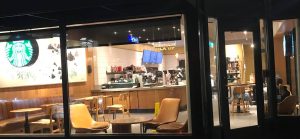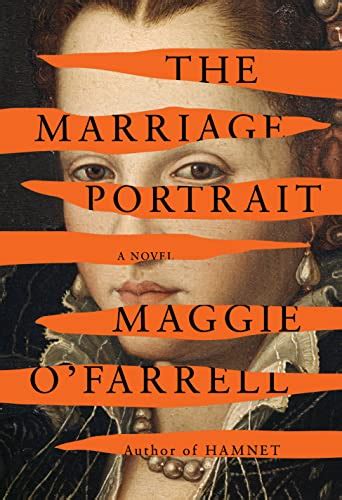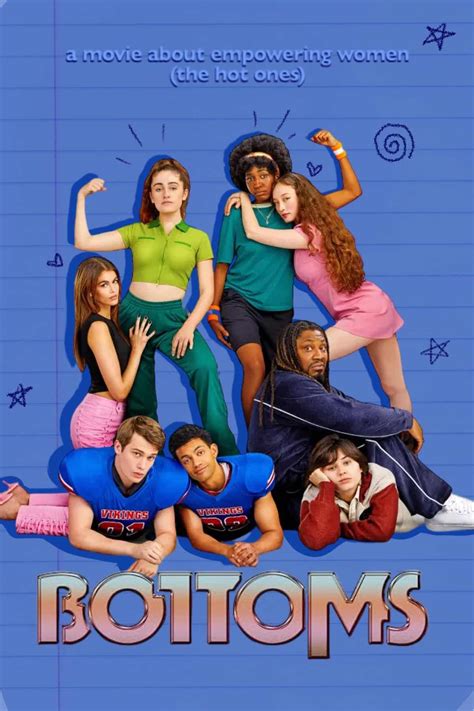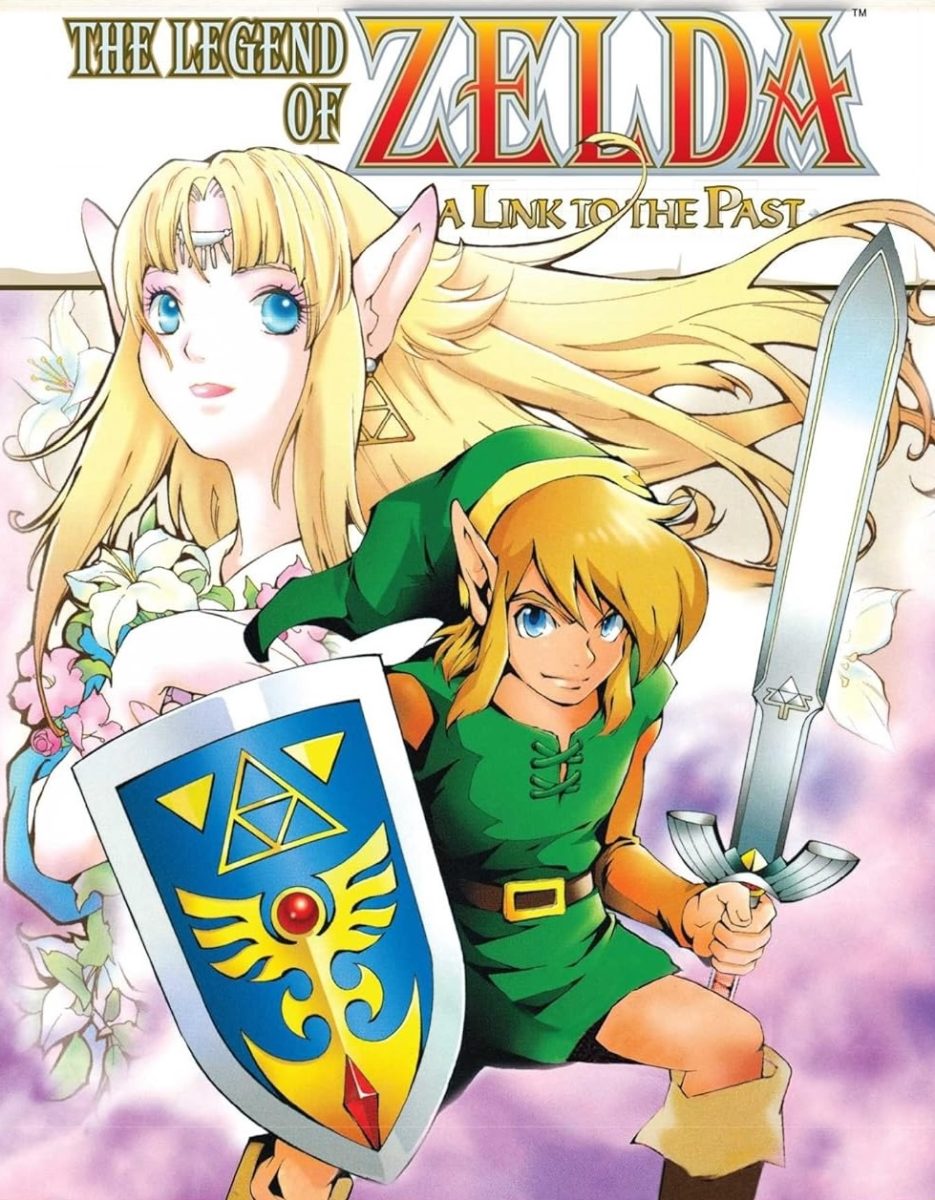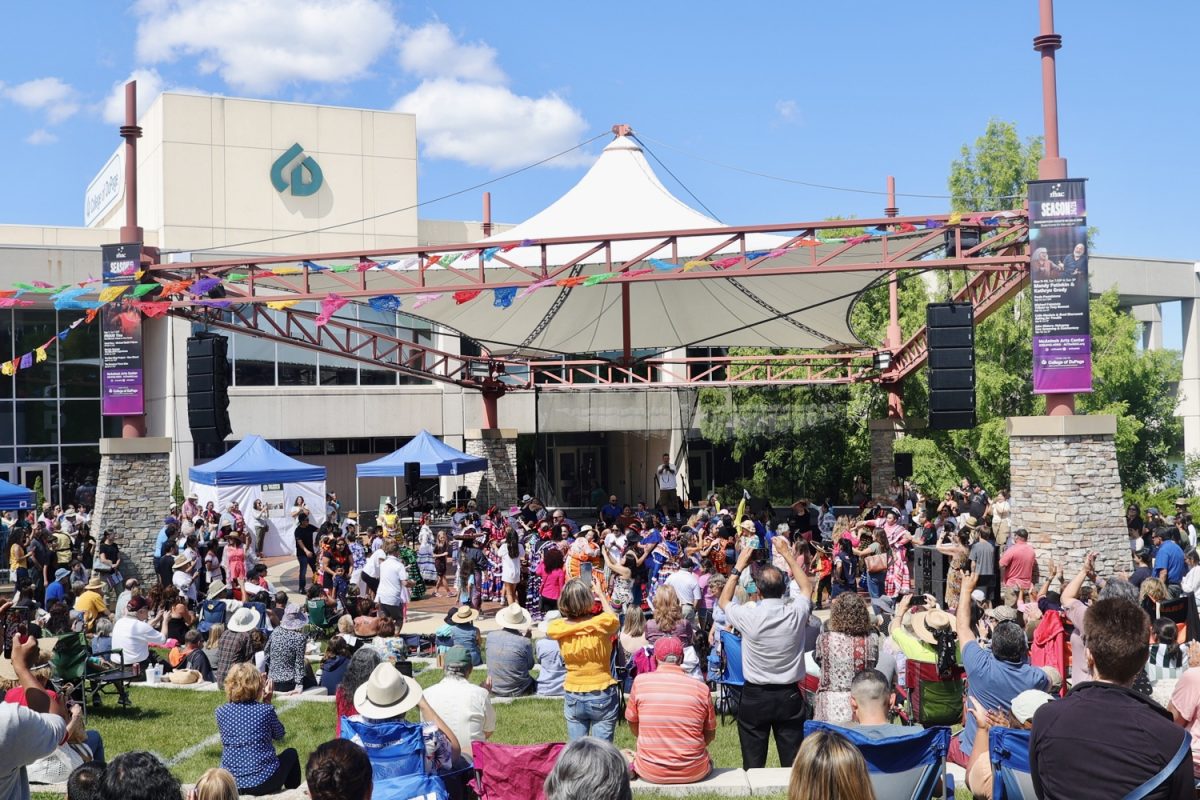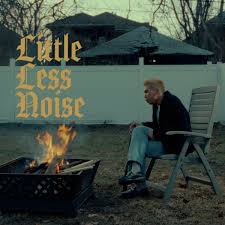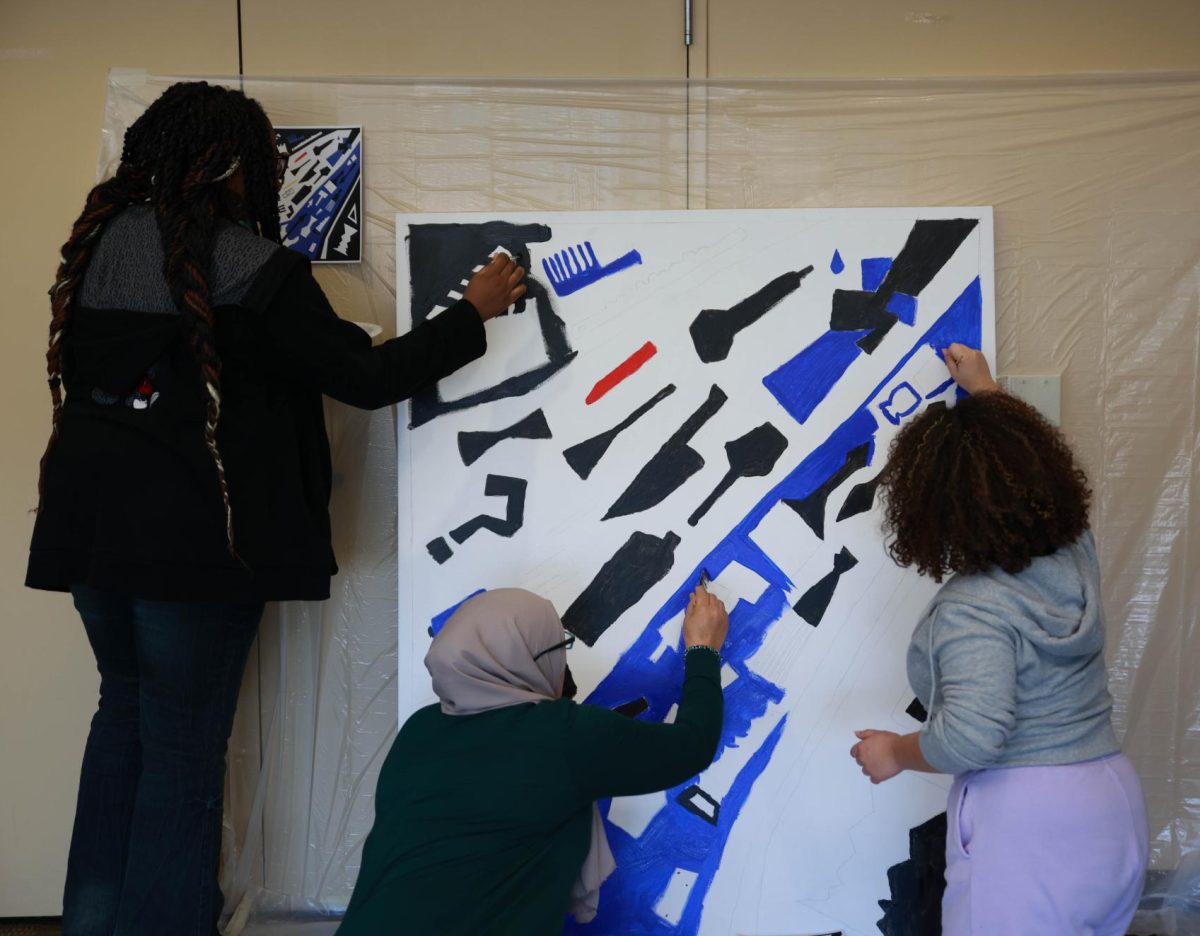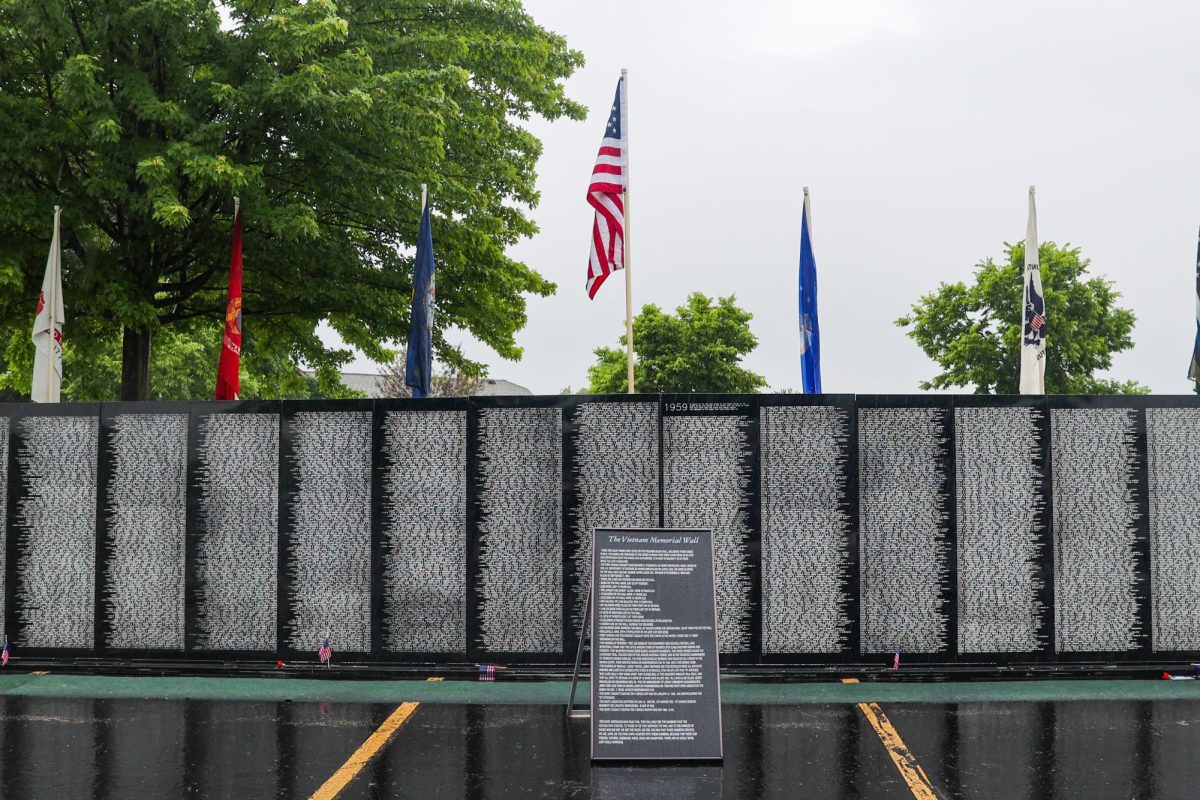The calming piano notes and drums of experimental beat jazz music welcomed and soothed attendees who picked up brushes, gathered paint on paper plates and collectively painted on large canvases against the wall with African-style geometric designs penciled on them.
Guest professional artist Taharka Baraka, who hosted the event and lent his works entitled “Blood, Sweat, Tears” as models for people to copy on the large canvases, said he discovered the therapeutic powers of art initially through watercolor painting, realizing that he had ideas and wishes he wanted to convey through art.
“I definitely just kind of stumbled upon art via watercolors by carrying around watercolors and painting outside,” he said. “And so through there, I started doing other sort of art things and finding that I had things that I had in my head that I wanted to get out and just kind of kept making stuff, you know, I feel like that’s kind of the deputy part is making something and seeing what it will be. You don’t know what it is going to be. It’s just like something that’s a new creation, something that you’ve never seen before, stuff that you may want to see in the world.”
Khameelah Bailey, a consumer marketing student at College of DuPage, attended the art therapy session. She said art therapy provides her with a chance to unwind from the everyday strenuous obligations of life.
“[I was drawn by] the opportunity to contribute to artwork, especially for Black History Month,” Bailey said. “I think it’s a great event for students and the community members to come and participate in what the campus has to offer for the month of Black History. [Art therapy provides] the opportunity to break away from the day-to-day grind and hustle and to just be vulnerable and not have a lot of restrictions. It’s a way of being expressive and totally just an escape from everyday routine.”
Rachel Wagner, a COD student, also participated in the session and affirmed that art therapy is a means of both healing and self-expression.
“I think art can be a great way to express our thoughts, ideas and emotions,” she said. “The practice of art itself can give people something to concentrate on and take our minds off of whatever we’re going through. When it comes to making art, there’s so many ways we can express our emotions whether it’s the shapes we make or the colors we pick, and I think that allows people to communicate their thoughts and ideas in a creative way.”
Baraka hopes art therapy evokes a sense of calm within attendees through the act of collectively contributing to a single or few large art pieces and letting go of any barriers to creativity, such as perfectionism.
“I feel like the biggest thing is just to enjoy the experience, just to come in, have fun, paint, do something that you might not normally do,” he said. “Or if you do normally like to draw or paint, do it in this atmosphere, where you’re sort of doing it with other people. Being able to paint something with 10 other people all sorts of working on the same project is a fun and rewarding feeling. I definitely hope people just have a good time and be proud of being able to contribute towards something. They’ll be able to see [the outcome of the art] when they walk around and be like, ‘Hey, I participated in that. I helped bring that to life. This is my part.’”
Bailey’s views on art therapy aligned with the breaking of perceived creative barriers, adding that the lifting of such limitations contributes to the therapeutic aspect of art therapy.
“Art is therapeutic because it’s very unique to the individual,” she said. “For whoever is the creator, they are able to create their own artwork, and they’re the judge of their piece. So there’s really no real rules, no limitations to art therapy.
Baraka emphasized the importance of cultivating a calm and welcoming atmosphere to ensure a successful art therapy session.
“I think the biggest thing is creating an environment of comfortability, of low risk and high reward,” he said. “Sometimes during the creative process, you’re afraid of failure. But when you can create an environment for people who might not necessarily have overcome that where they can get something done, and they can get over that sort of initial hump, you can kind of go from there.”
Wagner felt the art therapy session did indeed cultivate a calm and welcoming atmosphere.
“What stood out about the art therapy session was the sense of community it brought,” she said. “It felt like a collaborative effort where we were contributing to a bigger whole. The students who attended the event were meeting each other and talking to each other while completing the project, and it seemed like a relaxed vibe. It was cool to see an event where people can take time out of their day to contribute to a big mural project and enjoy themselves in the process.”
Baraka added that some people may derive more mental health benefits from art therapy than others, acknowledging the nuances of what makes different people feel at peace.
“It’s different for everybody,” he remarked. “Not everybody is into [making art], it might not hit the same for everybody, but some people might. [Art therapy] has some sort of release that they can go to, and this could be one of them for now.”
Bailey wished to encourage others to attend any art therapy sessions in the future, noting the therapeutic and emotionally liberating aspects of art therapy.
“There is no confinement or limitation. It’s a place where you can be free and expressive.”
Wagner said that art therapy and its healing aspects can help to catalyze a culture of understanding, unity and learning among communities, including in relation to Black History Month.
“I think that having a sense of community is really helpful when going through tough times,” she said. “I think connecting with other people around us really helps us open up more, and it’s really nice getting to hear other people’s thoughts, ideas and experiences. I also think art is a powerful medium that can bring people together, heal people on the inside or just capture our world around us whether it’s in a literal sense or the ideas we have in our own minds.”
College of DuPage invites students and the public to a variety of events for Black History this month of February, including “Meet the Black Student Alliance Club” on Feb. 21, and “The Pros and Cons of Black History Open Lunch and Learn Sessions in the Hub!” On Feb. 27.


